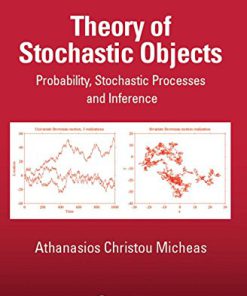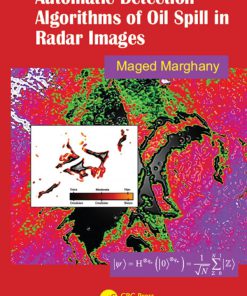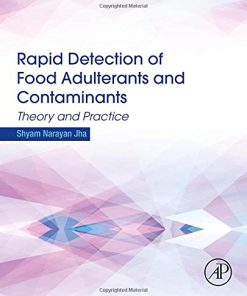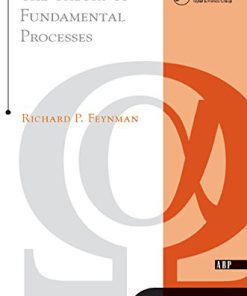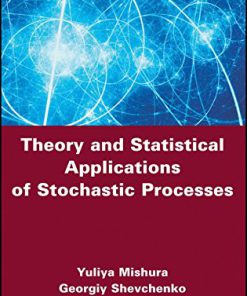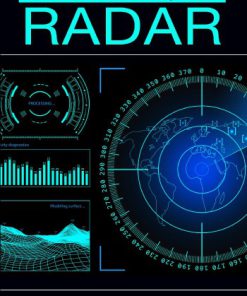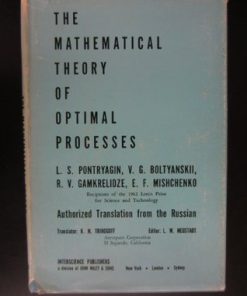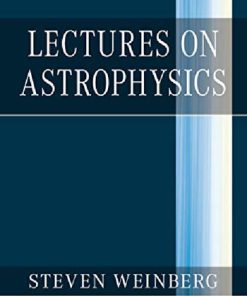Radar Detection Theory of Sliding Window Processes 1st Edition by Graham Weinberg 1351650069 9781351650069
$50.00 Original price was: $50.00.$25.00Current price is: $25.00.
Radar Detection Theory of Sliding Window Processes 1st Edition by Graham Weinberg – Ebook PDF Instant Download/DeliveryISBN: 1351650069, 9781351650069
Full download Radar Detection Theory of Sliding Window Processes 1st Edition after payment.
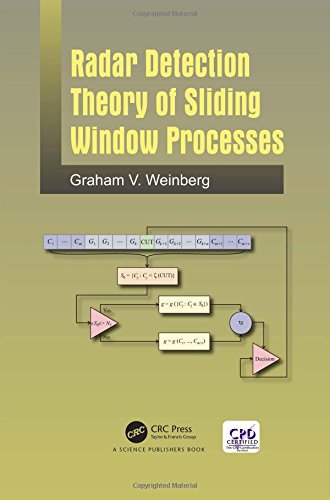
Product details:
ISBN-10 : 1351650069
ISBN-13 : 9781351650069
Author: Graham Weinberg
Constant false alarm rate detection processes are important in radar signal processing. Such detection strategies are used as an alternative to optimal Neyman-Pearson based decision rules, since they can be implemented as a sliding window process running on a radar range-Doppler map. This book examines the development of such detectors in a modern framework. With a particular focus on high resolution X-band maritime surveillance radar, recent approaches are outlined and examined. Performance is assessed when the detectors are run in real X-band radar clutter. The book introduces relevant mathematical tools to allow the reader to understand the development, and follow its implementation.
Radar Detection Theory of Sliding Window Processes 1st table of contents:
Section I: Preliminaries
1. Introduction
1.1 Purpose
1.2 Sliding Window Detectors
1.3 Range-Time Intensity Example
1.4 Historical Development
1.5 Mathematical Formulation
1.6 Detectors in Exponentially Distributed Clutter
1.7 Some Fundamental Concepts
1.8 Structure of the Book
2. Probability and Distribution Theory for Radar Detection
2.1 Outline
2.2 Fundamentals of Probability
2.3 Transformations
2.4 Moments
2.5 Inequalities
2.6 Jointly Distributed Random Variables
2.7 Conditional Distributions
2.8 Some Special Functions of Random Variables
2.9 Order Statistics
2.10 Uniform Distributions and Simulation
2.11 Properties of Estimators
2.12 Spherically Invariant Random Processes
3. 3 Distributions for X-Band Maritime Surveillance Radar Clutter
3.1 Introduction
3.2 Early Models for Clutter
3.3 The Weibull Distribution
3.4 K-Distribution
3.5 The Pareto Class of Distributions
3.6 Pareto Type Distributions
3.7 Properties of the Pareto Distribution
3.8 Parameter Estimation
3.9 Pareto Model Adopted for Detector Development
Section II: Fundamental Detection Processes
4. Adaptation of Exponential Detectors to Pareto Type I Distributed Clutter
4.1 Introduction
4.2 General Considerations
4.3 The Order Statistic Detector
4.4 The Cell‐Averaging Detector
4.5 The Geometric Mean Detector
4.6 Performance in Homogeneous Clutter
4.7 Effect of Interfering Targets
4.8 Clutter Transitions
4.9 Conclusions
5. A Transformation Approach for Radar Detector Design
5.1 Introduction
5.2 The Transformation Approach
5.3 Examples of Detector Performance
5.4 Preservation of the CFAR Property
5.5 Lomax‐Distributed Clutter and Detector Performance
5.6 Modification of the General Transformed Detector
5.7 Specialisation to the Pareto Clutter Case
5.8 Performance of the New CFAR Processes
5.8.1 Performance in Homogeneous Clutter
5.8.2 Perfo rmance in the Presence of Interference
5.8.3 Clutter Transitions
5.9 Conclusions
6. Modified Minimum Order Statistic Detector
6.1 Introduction
6.2 Transformed Order Statistic Detectors
6.3 Detector Comparison
6.4 Mathematical Analysis of Detectors
6.5 Selection of Parameter M
6.6 Performance in Homogeneous Clutter
6.7 Examples of Management of Interference
6.8 False Alarm Regulation
6.9 Conclusions
7. Dual Order Statistic CFAR Detectors
7.1 Introduction
7.2 Motivation and Definition of Detection Process
7.3 Specialisation to the Pareto Type I case
7.4 Performance in homogeneous clutter
7.5 Management of Interfering Targets
7.6 False Alarm Regulation
7.7 Conclusions
8. On Goldstein’s Log-t Detector
8.1 Introduction
8.2 The Log-t Detector
8.3 An Order Statistic Based Log-t Detector
8.4 Performance in Homogeneous Clutter
8.5 Interference
8.6 False Alarm Regulation
8.7 Conclusions
Section III: Specialised Developments
9. Switching Based Detectors
9.1 Introduction
9.2 Development of a Switching Detector
9.3 Generalisation of the Switching Detector
9.3 Generalisation of the Switching Detector
9.4 Switching CFAR Detector
9.5 Performance of the SW‐CFAR Detector
9.5.1 Performance in Homogeneous Clutter
9.5.2 Performance with Interference
9.5.3 False Alarm Regulation
9.6 Conclusions
10. Developments in Binary Integration
10.1 Introduction
10.2 Binary Integration
10.3 Mathematical Analysis of Binary Integration
10.4 Binary Integration Parameter S
10.5 Performance in Homogeneous Clutter
10.6 Performance with Interference
10.7 Clutter Transitions
10.8 Conclusions
11. Detection in range correlated clutter
11.1 Introduction
11.2 Decision Rule in Correlated Clutter
11.3 Mardia’s Multivariate Pareto Model
11.4 Order Statistic Decision Rule Thresholds
11.5 Performance Analysis
11.5.1 Perfo rmance in Homogeneous Clutter
11.5.2 Performance with Interference in the CRP
11.5.3 False Alarm Considerations
11.6 Analysis of the Minimum‐Based Detector
11.7 Achieving CFAR in Correlated Pareto Distributed Clutter
11.8 Conclusions
Section IV: Further Concepts
12. Invariance and the CFAR Property
12.1 Introduction
12.2 Group Theory Basics
12.3 The Invariance Property
12.4 Some Invariant Statistics
12.5 Examples of Invariant CFAR Detectors
12.6 Performance of Invariant Detectors
12.6.1 Homogeneous Clutter
12.6.2 Interference
12.6.3 False Alarm Regulation
12.7 Conclusions
13. Convergence And Approximation Of The Pareto Model
13.1 Introduction
13.2 Problem Specification
13.3 Information Theory
13.4 Kullback‐Leibler Divergence
13.5 Conclusions
People also search for Radar Detection Theory of Sliding Window Processes 1st:
radar detection theory
radar detection theory of sliding window processes pdf
radar windowing
sliding window detector
radar sliding window
Tags: Radar Detection, Theory, Sliding Window, Processes, Graham Weinberg
You may also like…
Science (General)
Mathematics
Theory of stochastic objects probability stochastic processes and inference 1st Edition Micheas
Engineering
Automatic Detection Algorithms of Oil Spill in Radar Images 1st Edition Maged Marghany (Author)
Biology and other natural sciences - Plants: Agriculture and Forestry
Rapid Detection of Food Adulterants and Contaminants: Theory and Practice 1st Edition Jha
Science (General)
Theory and Statistical Applications of Stochastic Processes 1st Edition Yuliya Mishura
Engineering
Fundamental principles of radar 1st Edition by Habib Rahman ISBN 1138387797 978-1138387799
Mathematics - Optimization. Operations Research





